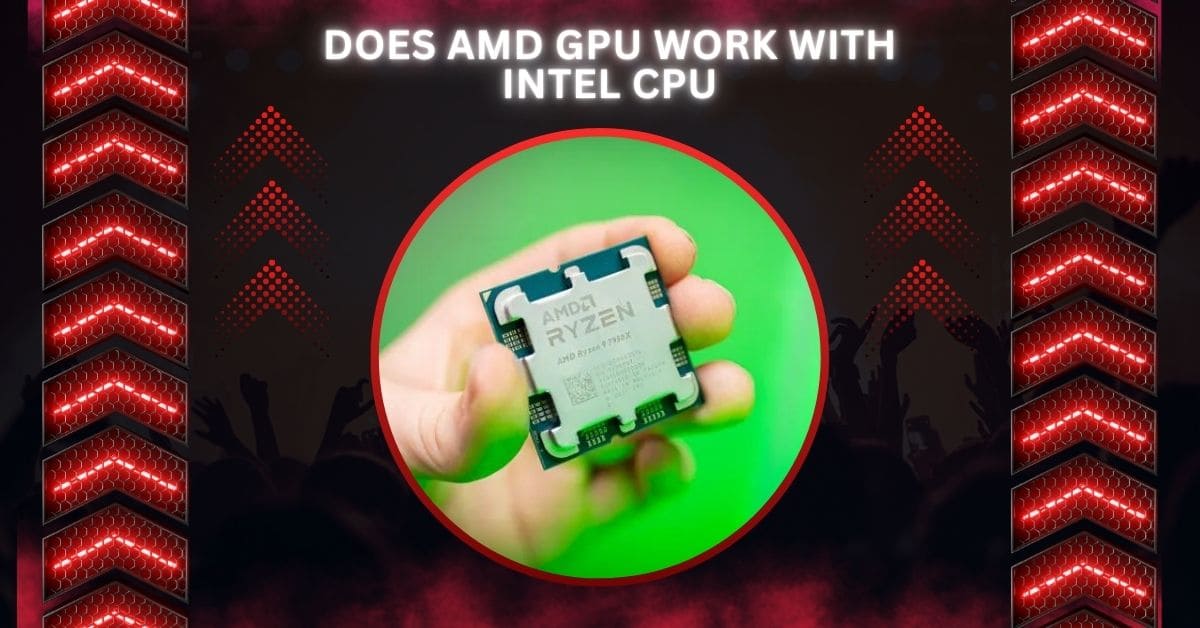Pairing an AMD GPU with an Intel CPU is a common and highly effective setup for gaming and productivity systems.
Yes, an AMD GPU can be used with an Intel CPU. Both components are compatible through PCIe slots, ensuring smooth operation and performance without any issues. This combination works perfectly for most users.
This article explores the compatibility, benefits, and potential limitations of combining these two major brands, helping users understand how to optimize their PC builds for performance, cost-effectiveness, and future upgrades.
Compatibility Overview
When connecting an AMD GPU with an Intel CPU, several key factors should be kept in mind:
1. PCIe Slots
Both AMD GPUs and Intel CPUs utilize PCIe slots for communication. PCIe is backward and forward-compatible, meaning that newer GPUs can be used in older motherboards, although performance may be reduced if the PCIe version differs significantly.
2. Power Requirements
Ensure your power supply has the appropriate PCIe cables for your AMD GPU. Different models have different power requirements, so verify that your PSU can handle the GPU’s demand.
3. Motherboard Size and GPU Dimensions
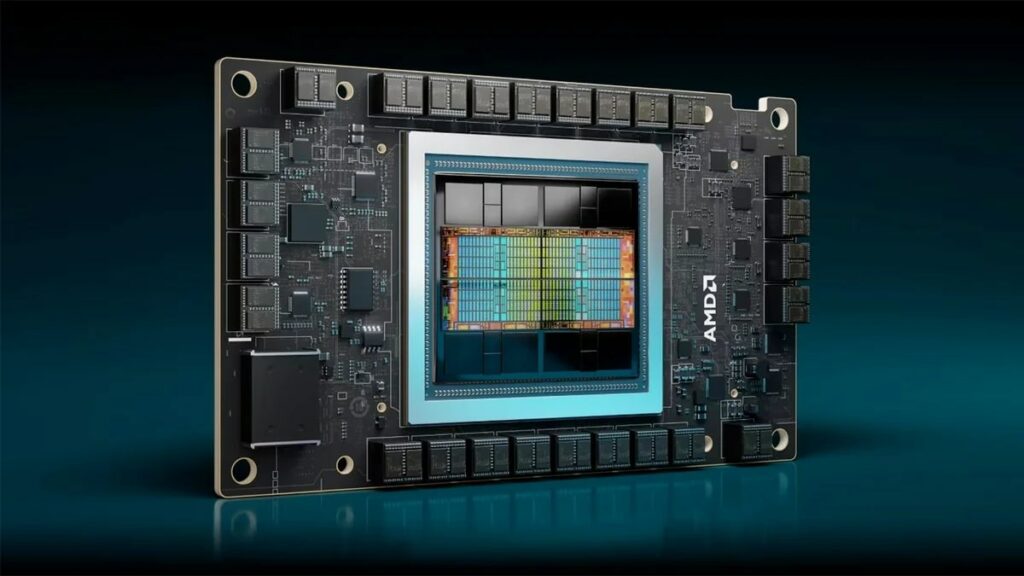
Modern AMD GPUs can be large and require substantial space within your PC case. Ensure your motherboard and case have enough space to fit the GPU without obstructing other components.
4. Bottlenecking
A lower-end Intel CPU could bottleneck a high-performance AMD GPU. The CPU’s speed and capabilities may limit the GPU’s performance. To avoid this, ensure your CPU is powerful enough to match the GPU’s performance.
AMD’s Smart Access Memory (SAM)
While an AMD GPU can work efficiently with an Intel CPU, using an AMD CPU alongside an AMD GPU offers additional benefits, such as Smart Access Memory (SAM).
SAM enhances the CPU and GPU data transfer, resulting in performance gains, sometimes up to 15%. However, this feature only works with an AMD CPU, motherboard, and compatible GPU.
For most users, especially those not engaged in high-end gaming or demanding graphical workloads, pairing an AMD GPU with an Intel CPU will deliver excellent performance.
Still, an all-AMD setup might offer incremental performance benefits if you’re looking to maximize your system’s capabilities and take advantage of features like SAM.
Also Read: Use GPU RAM As System RAM – The Complete Overview – 2024
Advantages of AMD GPUs with Intel CPUs
1. Cost-Effective
AMD GPUs often provide great value for the price, especially compared to NVIDIA alternatives. Users can build a powerful gaming or productivity system at a lower cost by combining an Intel CPU with an AMD GPU.
2. No Major Performance Gaps
In most real-world applications, there’s no significant performance gap when pairing an AMD GPU with an Intel CPU compared to an AMD CPU. Intel CPUs are known for their strong single-core performance, which can benefit gaming and other CPU-intensive tasks.
3. NVIDIA Alternative
If you’re not opting for an NVIDIA GPU, which may offer more advanced features like ray tracing, an AMD GPU still delivers strong performance in gaming, video editing, and 3D rendering tasks when used with Intel processors.
Common Considerations for Compatibility
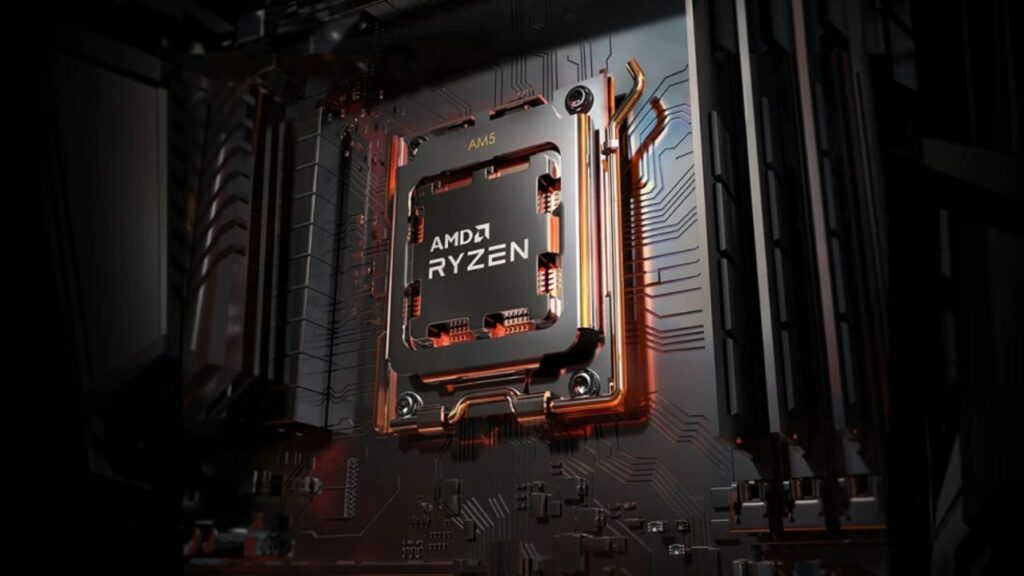
- PCIe Slot Compatibility: Since AMD GPUs use PCIe slots, you must ensure your motherboard has the right PCIe version and enough lanes to accommodate the GPU’s performance. While PCIe is backward-compatible, mismatched PCIe versions (e.g., PCIe 4.0 GPU in a PCIe 3.0 slot) can significantly reduce performance.
- Power Supply: As mentioned earlier, AMD GPUs, especially higher-end models, require significant power. Ensure your power supply unit (PSU) has enough wattage and connectors to support your GPU.
- Cooling and Case Size: AMD GPUs, particularly the high-end ones, tend to generate a lot of heat and can be physically large. Adequate case airflow and cooling solutions are essential to avoid thermal throttling.
Why Choose an AMD GPU with Intel CPU?
Users often pair AMD GPUs with Intel CPUs for several reasons, including performance and cost-effectiveness.
Intel CPUs are known for their excellent single-core performance, which is ideal for gaming, while AMD GPUs are budget-friendly and provide great performance at a high price. Together, they create a balanced system that excels in gaming, video editing, and other demanding tasks.
Also Read: Why Is Valorant Using So Much GPU – Key Reasons And Fixes!
Key Considerations When Pairing AMD GPUs with Intel CPUs
1. Motherboard Compatibility
Before purchasing an AMD GPU, ensure your motherboard has the necessary PCIe slots. The good news is that PCIe slots are standardized, meaning your motherboard should work with any modern GPU, but checking slot availability and version is always advisable.
2. Power Supply Requirements
AMD GPUs, especially higher-end models, require robust power supplies with specific PCIe power connectors. Ensuring your PSU meets the GPU’s wattage needs is crucial to avoid system instability or power issues.
3. CPU Bottlenecking
Pairing a high-end AMD GPU with a lower-end Intel CPU can lead to bottlenecking, where the CPU can’t keep up with the GPU’s performance.
This imbalance can affect gaming and overall system performance, so balancing your CPU and GPU capabilities is important.
AMD Smart Access Memory: Does It Make a Difference?
Smart Access Memory (SAM) improves data transfer between AMD CPUs and GPUs. While it’s a nice bonus for those with an all-AMD setup, it doesn’t significantly impact overall performance for most users.
If you’re running an Intel CPU, you won’t have access to SAM, but this feature is not essential for a good experience.
Can You Use AMD Software and Drivers with an Intel CPU?
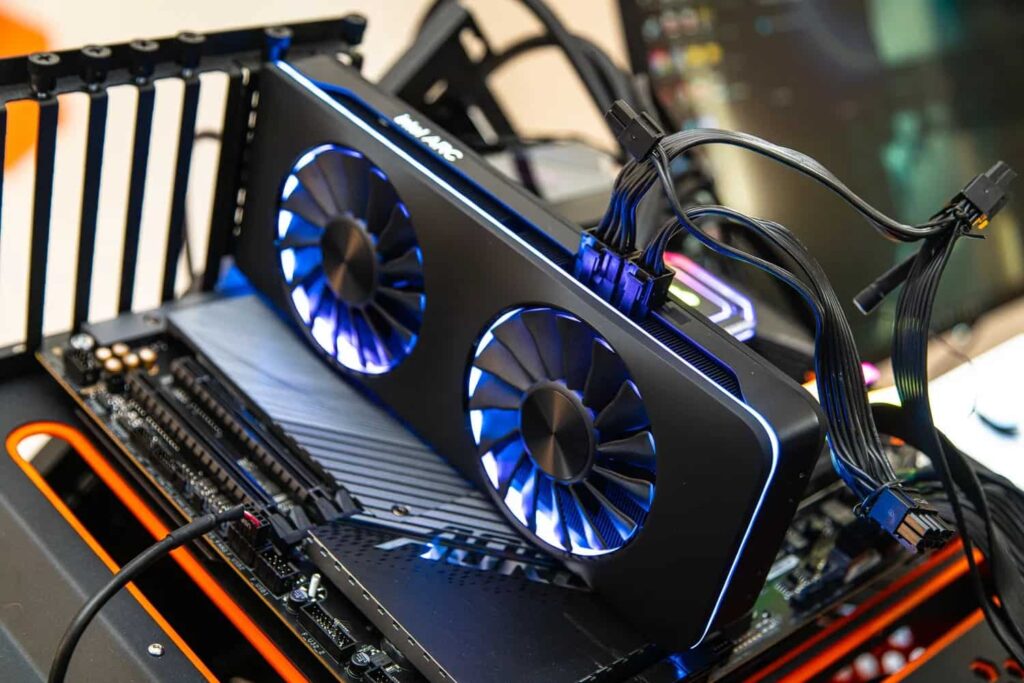
Yes, AMD GPUs use the Radeon Software Adrenalin Edition, which works on any system with an AMD graphics card, regardless of whether the CPU is Intel or AMD.
This software lets you update drivers, optimize settings, and improve performance through features like Radeon Boost and Radeon Anti-Lag.
Intel CPU vs. AMD CPU: Which Is Better for an AMD GPU?
While Intel and AMD CPUs work well with AMD GPUs, the decision comes down to personal preference and use cases.
Intel CPUs often have superior single-core performance, making them ideal for gaming, whereas AMD CPUs tend to offer more cores, which is better for multitasking and content creation. Both CPUs perform excellently when paired with an AMD GPU, but each shines in different areas.
Real-World Performance of AMD GPUs with Intel CPUs
AMD GPUs paired with Intel CPUs show no significant performance degradation in real-world tests. Many gamers and content creators use these combinations to great effect.
For most users, the combination provides a smooth and cost-effective system with excellent performance in both gaming and professional tasks.
Must Read: Do GPU Fans Always Spin? – What Affects Spinning – 2024!
Advantages of an All-AMD System
While combining an Intel CPU and AMD GPU is effective, there are benefits to using an all-AMD system. These include better optimization through features like Smart Access Memory and better communication between components, potentially providing a slight performance boost.
Potential Limitations and Drawbacks
One minor drawback when using an AMD GPU with an Intel CPU is the need for access to some AMD-exclusive features like SAM, but these limitations are not critical for most users. The minimal overall performance difference makes the Intel CPU and AMD GPU pairing a solid choice.
How to Maximize Performance with an AMD GPU and Intel CPU
Ensure your system is properly optimized to get the best performance from an AMD GPU and Intel CPU setup. Here are a few tips:
- Keep your drivers updated with Radeon Software.
- Ensure that your CPU and GPU are well-matched in terms of performance.
- Monitor temperatures to prevent overheating, especially during intensive tasks like gaming or rendering.
- Use a robust power supply that can handle the power requirements of your components.
Intel vs. AMD Motherboard Compatibility
It’s worth noting that while Intel CPUs can work with AMD GPUs, they won’t work with AMD motherboards.
Intel CPUs require Intel chipsets, and AMD CPUs require AMD chipsets. This distinction is important if you plan on upgrading other components in the future.
Does AMD GPU work with Intel CPU for Gaming
Yes, AMD GPUs work perfectly with Intel CPUs for gaming. They are compatible if your motherboard has the correct PCIe slot and power supply. This combination delivers excellent gaming performance without any brand-related restrictions.
Can you use Intel CPU with AMD Motherboard?
No, Intel CPUs are not compatible with AMD motherboards. Intel and AMD CPUs require motherboards designed for their specific sockets and chipsets. Always ensure your CPU and motherboard are designed to work together for optimal performance.
Can you pair AMD CPU with Nvidia GPU?
Yes, you can pair an AMD CPU with an Nvidia GPU without issues. They are compatible if your motherboard and power supply meet the hardware requirements. This combination often delivers excellent gaming and productivity performance.
Do AMD graphics cards work better with AMD processors?
AMD graphics cards do not inherently perform better with AMD processors. Performance depends on the GPU, CPU, and system configuration.
Pairing AMD cards with AMD CPUs might optimize certain features like Smart Access Memory, but Intel CPUs also work seamlessly.
Intel CPU AMD GPU Resizable BAR
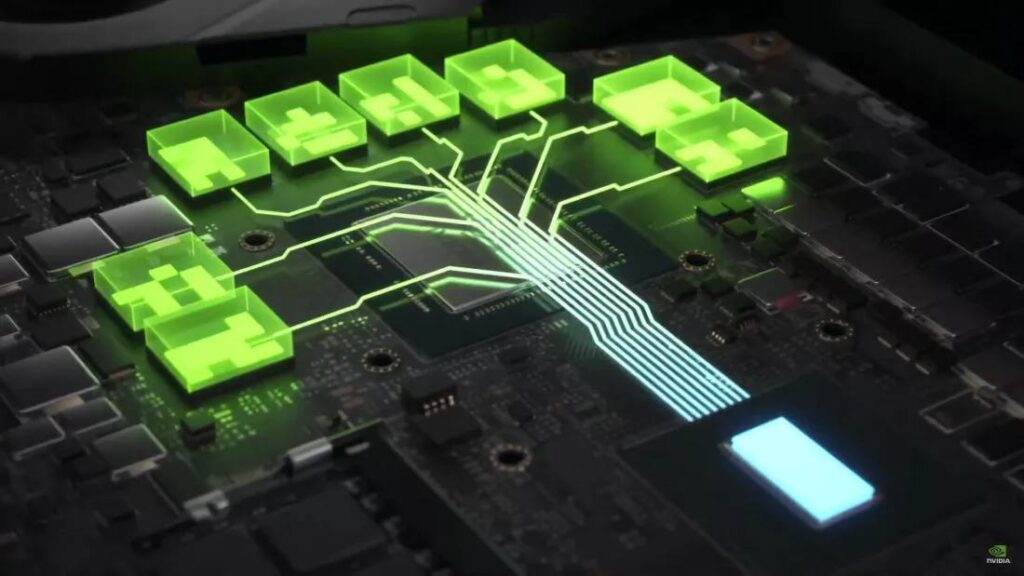
Resizable BAR works with Intel CPUs and AMD GPUs if the motherboard supports it. This feature allows the CPU to access the GPU’s full memory, improving performance in some games and applications. Ensure BIOS and driver updates are applied.
How bad is using a Intel CPU with a AMD GPU?
Using an Intel CPU with an AMD GPU is okay. Both components are compatible, and performance is excellent when the system is configured correctly. This pairing works well for gaming and professional tasks without noticeable drawbacks.
Is it okay to use a Intel CPU with AMD GPU?
Yes, using an Intel CPU with an AMD GPU is perfectly okay. If your motherboard, PSU, and drivers are compatible, they work together without issues. This combination is common and delivers excellent performance across many applications.
Can a AMD GPU go with a Intel CPU
Yes, an AMD GPU can go with an Intel CPU without problems. Both brands are designed for cross-compatibility, making this pairing a popular choice for gamers and creators. Just ensure your system meets power and PCIe slot requirements.
Must Read: Can I Use CPU Cable For GPU? – A Complete Guide In 2024!
Do Intel CPUs & AMD Cards go well together?
Yes, Intel CPUs and AMD cards go well together. They deliver reliable performance across gaming, video editing, and other tasks. There are no compatibility concerns, provided your system’s hardware is modern and configured adequately with updated drivers.
Pairing a AMD GPU with a Intel CPU?
Pairing an AMD GPU with an Intel CPU is a great choice. They are compatible and provide excellent gaming and productivity performance. For the best results, ensure proper installation, sufficient power supply, and driver updates.
What are the cons of using AMD GPU and Intel CPU together?
There are very few cons. One minor drawback is losing access to AMD-exclusive features like Smart Access Memory, which is optimized for AMD CPUs. However, overall performance remains excellent, with no significant compatibility or performance issues for most applications.
Can AMD graphics cards run on Intel CPUs?
Yes, AMD graphics cards work perfectly with Intel CPUs. They are designed for cross-platform compatibility, ensuring smooth performance in gaming and productivity tasks when paired with an Intel processor, as long as the motherboard supports the GPU requirements.
Can You Use An AMD GPU With An Intel CPU?
Yes, you can use an AMD GPU with an Intel CPU. This pairing is common in gaming PCs and workstations and offers excellent performance. Ensure your motherboard, power supply, and drivers meet compatibility standards for seamless integration.
AMD GPU on Intel Motherboard & Vice Versa. Does it matter?
It doesn’t matter. AMD GPUs work equally well on Intel motherboards, provided the PCIe slots, power requirements, and drivers are supported. Cross-brand compatibility is standard, allowing users to mix AMD GPUs with Intel CPUs or motherboards without issues.
Is an Intel processor compatible with both Nvidia and AMD video cards?
Yes, Intel processors are compatible with both Nvidia and AMD video cards. The choice between AMD and Nvidia depends on your needs, budget, and preferred features. Intel CPUs support all GPUs as long as the system meets compatibility requirements.
[Build Help] Can you use a AMD GPU with an Intel CPU & MOBO?
Yes, you can use an AMD GPU with an Intel CPU and motherboard. This combination works flawlessly if the motherboard has a compatible PCIe slot and the power supply supports the GPU. Performance remains vital for gaming and productivity.
FAQs
1. Is Intel Arc compatible with AMD?
Yes, Intel Arc GPUs are compatible with AMD CPUs, as both use PCIe slots. This ensures interoperability, allowing users to pair Intel Arc graphics cards with AMD processors seamlessly.
2. Can I install AMD drivers on Intel?
Yes, you can install AMD GPU drivers on a system with an Intel CPU. The GPU drivers are separate from the CPU and ensure the proper functioning of the graphics card.
3. Can you pair an AMD GPU with an Intel CPU on Reddit?
According to Reddit discussions, many users successfully pair AMD GPUs with Intel CPUs, which works perfectly fine as long as the system has compatible hardware components.
4. Is it better to have an AMD CPU with an AMD GPU?
An AMD CPU with an AMD GPU may offer slight benefits like Smart Access Memory. Still, most users won’t notice a significant performance difference compared to using an Intel CPU.
5. Is it OK to use AMD GPU with Intel CPU?
Yes, using an AMD GPU with an Intel CPU is completely fine. The PCIe standard ensures compatibility; most users experience no issues with this pairing.
6. Does Intel CPU bottleneck AMD GPU?
Intel CPUs can bottleneck an AMD GPU if the CPU is significantly less powerful than the GPU. To avoid this, balance your CPU and GPU performance to prevent bottlenecks.
7. Will pairing Ryzen CPU with Intel GPU make a good PC? Will I face any issues?
Yes, Ryzen CPUs and Intel GPUs work well together. There are no compatibility issues as long as the motherboard supports both.
8. Am I loosing performance by pairing an AMD GPU with an Intel CPU? (RX 7900 XTX + i7-13700KF)
No, you won’t lose performance. This pairing works excellently for gaming or productivity. Both components deliver great results without compatibility issues.
9. Is it ok to have a Intel CPU and a AMD GPU or is better to have both the same
It’s perfectly okay to mix Intel CPUs with AMD GPUs. Matching brands isn’t necessary, as performance depends on the components’ capabilities.
10. Would having an AMD CPU and an AMD graphics card give me a performance boost in gaming?
Yes, pairing AMD CPU and GPU can slightly boost performance due to features like Smart Access Memory, but it’s not always significant.
Conclusion
In conclusion, pairing an AMD GPU with an Intel CPU is perfectly compatible and can deliver excellent performance for gaming and productivity. Ensure your hardware fits well together, and monitor for potential bottlenecks. While an all-AMD setup offers slight advantages, the AMD-Intel combo is a solid choice.
